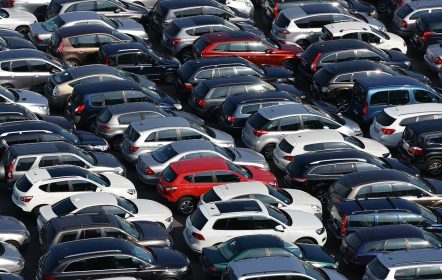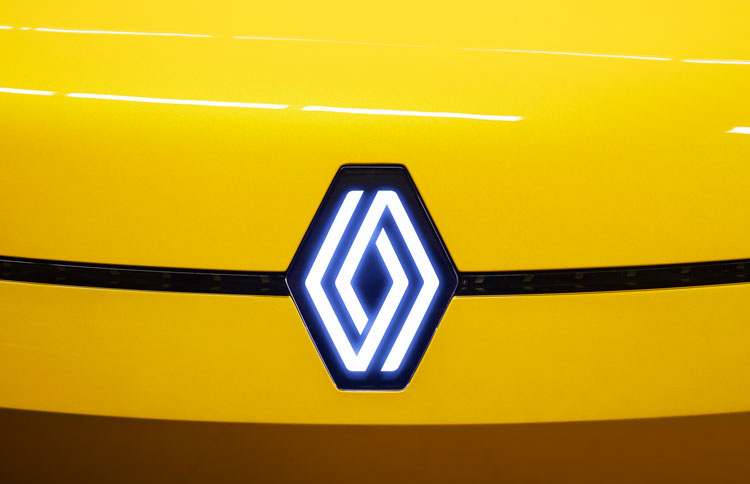TECH

One Tech Tip: Protecting your car from the growing risk of keyless vehicle thefts
They appear like ghosts in the night, standing outside your house, one holding up an antenna while the other crouches next to the car parked on the driveway. Within seconds, your car is gone, yet another victim amid a surge in auto theft enabled by the technology designed to make it easier to unlock and start vehicles.
Auto technology has evolved and many newer cars use wireless key fobs and push-button starters instead of traditional metal keys. The fob sends a short-range signal, so when the driver approaches the car, it automatically unlocks the door. This saves you the hassle of digging out your keys when you've got your hands full with groceries.
But that technology also makes things easier for thieves. The wireless fob will continue to emit a signal even if you're not using it. Thieves prowl neighborhoods at night looking for cars parked outside so they can carry out so-called relay attacks. Using portable equipment that can pick up the faint signal from a fob inside the house or parking lot, they relay it back to a transmitter that can clone the signal.
Officials have urged carmakers to reduce the security vulnerabilities and warn owners about the risks.
So what can you do to reduce the odds that your car will be gone in 60 seconds? "It's relatively easy for drivers to protect themselves," said Steve Launchbury, principal engineer of automotive security at Thatcham Research, a U.K.-based automotive risk intelligence company. Here are some tips:
USE A SIGNAL BLOCKER...A simple but effective way to stop auto bandits from purloining your key fob signal is to use a Faraday bag or pouch. They're lined with a conductive metal mesh that blocks the transmission of electromagnetic signals.
The pouches aren't expensive, and you can also get boxes that do the same thing. But experts advise testing to make sure they work. Just put the key fob inside and approach your car. If the doors don't automatically unlock, then the signal is being blocked.
It's also important to remember to use it whenever you leave your vehicle, and don't forget to put all of your key fobs inside, including any spares.
But ignore some advice making the rounds on the internet telling you to put your fob in the microwave or freezer. It doesn't have the same effect as a Faraday bag, and you risk damaging your key.
GET AN OLD-FASHIONED LOCK...Try an old-school solution by using a physical lock. Some police forces advise car owners to use them to make your vehicle look less tempting to steal. The reasoning is that a would-be thief might be deterred by the effort needed to cut through the lock and instead turn their attention to an easier target.
Locks, in the shape of a disk or a long bar, clamp onto the steering wheel and make it difficult to steer. There are also versions for manual transmissions that prevent the car from being put in gear. The downside is you'll need extra time to attach or remove it whenever you aren't driving.
Metropolitan Police Department Sgt. Anthony Walsh sets out steering wheel locks at an anti-crime event in Washington on Nov. 7, 2023. A physical lock that attaches to the steering wheel can act as a visible deterrent to car thieves. Credit: AP Photo/Amanda Andrade-Rhoades, FileCHANGE UP YOUR SETTINGS...For many cars, it's possible to deactivate the wireless setting so that you can't open the door remotely. For Fords, Hondas and Audis, use the touchscreen menus. If you own a Toyota, you can temporarily disable the signal by holding down the fob's lock button and at the same time pressing the unlock button twice. If you've done it correctly, the fob's indicator light should blink four times. Be aware that the next time you press any button, remote unlocking will be reactivated.
The method will vary depending on make and model so consult your owner's manual for the exact process. If it sounds complicated, there are YouTube videos that walk you through it. Don't forget that in most cases you'll now have to manually press the fob's unlock button.
Automakers have started adding motion sensors to key fobs. If the sensor doesn't detect recent movement because it's been, say, left on the kitchen counter after you come home, the fob goes into sleep mode and stops transmitting. If it lacks this capability, check with your dealer whether it's possible to upgrade it.
If you buy a used car, some experts also advise getting the keys reprogrammed, just in case the previous owner kept one of the fobs.
WATCH OUT FOR NEW METHODS...Researchers have uncovered a new auto theft technique that doesn't target radio signals. The controller area network, or CAN, is "a feature of modern cars which allows different components and systems to communicate, (and) has recently been targeted and exploited by thieves," said Thatcham's Launchbury.
The network allows sensors and control modules to talk to each other directly, instead of going through a central node. Thieves take advantage by accessing the network from the car's exterior, usually by removing a headlight and connecting a device that can "inject" a signal, tricking the car into unlocking and starting.
While automakers work on improving CAN security, "there are steps drivers can take today to add layers of security and deter criminals," such as using a physical lock, Launchbury said.
Aftermarket electronic immobilizer systems "should render a criminal's theft tool useless," and might even get you a discount on auto insurance, he said. Thatcham and other companies offer them but the downside is they can be quite pricey.
© 2024 The Associated Press











